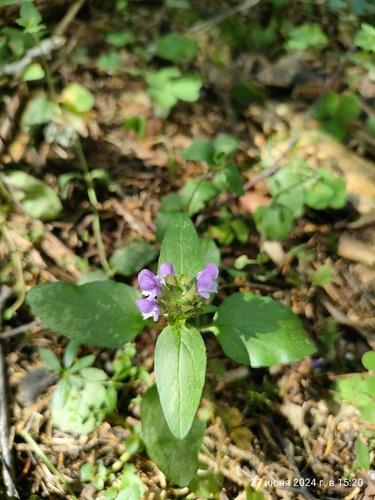
Common selfheal (Prunella vulgaris)
Common selfheal, also known as Heart-of-the-earth, Blue curls
### Culinary Uses
1. **Salads**: Fresh young leaves of common selfheal can be added to salads, providing a slightly minty, bitter note. It's advisable to rinse the leaves thoroughly to reduce their bitterness.
2. **Soups and Stews**: The leaves can also be cooked in soups and stews, contributing a mild, earthy flavor.
### Other Applications
1. **Dye Production**: The stems of common selfheal can be used to produce an olive-colored dye, useful for natural fabric dyeing projects.
2. **Gardening**: Due to its attractive purple flowers, common selfheal is often cultivated in gardens for ornamental purposes.
3. **Traditional Medicine**: Historically, it has been used in herbal remedies for its anti-inflammatory and antimicrobial properties, often applied to minor wounds or brewed into a soothing tea.
Common selfheal is versatile, finding roles in both culinary and practical applications.